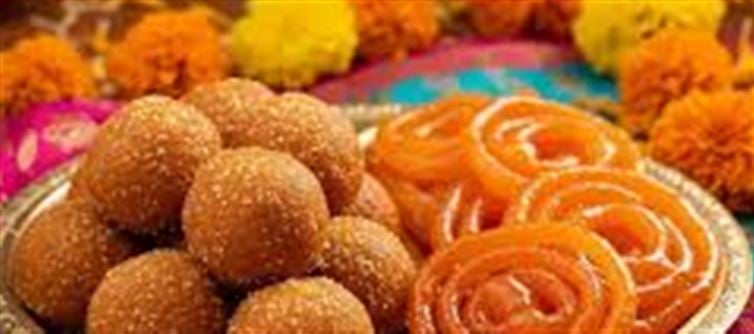
Festivals in india are not just about rituals—they are celebrations of culture, community, and cuisine. Central to these celebrations are sweets, which symbolize joy, prosperity, and togetherness. Every festival, region, and community has its signature sweet, made with care, tradition, and often a touch of nostalgia that brings families together.
🔹 1. Laddoo – The Universal Festive Treat
· Regions: Popular across North, South, and West India.
· Occasions: Diwali, Ganesh Chaturthi, weddings, and other celebrations.
· Ingredients & Varieties:
o Besan Laddoo (gram flour)
o Motichoor Laddoo (tiny gram flour pearls)
o Coconut or Rava Laddoo
· Significance: Symbolizes prosperity and sweetness of life. Often offered to deities and shared with family and neighbors.
🔹 2. Thekua – Bihar’s Beloved Sweet
· Region: bihar, Jharkhand, and parts of Uttar Pradesh.
· Occasions: Chhath Puja and other local festivals.
· Ingredients: Wheat flour, jaggery, and ghee, shaped into crispy discs.
· Significance: Traditionally prepared as prasad for sun God, representing devotion and purity.
🔹 3. modak – Maharashtrian Delight
· Region: Maharashtra
· Occasion: Ganesh Chaturthi
· Ingredients: Rice flour or wheat dough with coconut and jaggery filling
· Significance: Believed to be Lord Ganesha’s favorite sweet, modak represents spiritual fulfillment and devotion.
🔹 4. Peda – The North indian Classic
· Region: Uttar Pradesh, Rajasthan, Gujarat
· Occasion: Festivals, weddings, and religious offerings
· Ingredients: Milk solids (khoya), sugar, and cardamom
· Significance: Sweet, soft, and rich—peda symbolizes affluence and sacredness, often used as temple offerings.
🔹 5. sandesh – Bengal’s Sweet Legacy
· Region: West Bengal
· Occasion: durga puja and bengali weddings
· Ingredients: Fresh chhena (paneer), sugar, and flavorings like saffron or cardamom
· Significance: Delicate and aromatic, sandesh reflects Bengal’s refined culinary traditions.
🔹 6. mysore pak – South indian Festival Favorite
· Region: Karnataka
· Occasion: Ugadi, Diwali, and temple offerings
· Ingredients: Gram flour, ghee, and sugar
· Significance: Its rich texture and buttery taste make it synonymous with festive indulgence in South India.
🔹 A journey Through Sweetness
India’s festive sweets tell stories beyond taste:
· Cultural diversity: Each sweet reflects regional ingredients, climate, and history.
· Religious symbolism: Many sweets are prasad offerings, connecting the culinary and spiritual world.
· Family traditions: Recipes are often handed down generations, preserving nostalgia and heritage.
🔹 Conclusion
From the crispy Thekua of Bihar to the delicate sandesh of Bengal, India’s festivals are incomplete without sweets. Each sweet is a symbol of joy, devotion, and togetherness, weaving a narrative that transcends regions and generations. Celebrating festivals with these treats is not just about indulgence—it’s about honoring tradition, family bonds, and cultural heritage.
Disclaimer:
The views and opinions expressed in this article are those of the author and do not necessarily reflect the official policy or position of any agency, organization, employer, or company. All information provided is for general informational purposes only. While every effort has been made to ensure accuracy, we make no representations or warranties of any kind, express or implied, about the completeness, reliability, or suitability of the information contained herein. Readers are advised to verify facts and seek professional advice where necessary. Any reliance placed on such information is strictly at the reader’s own risk.




 click and follow Indiaherald WhatsApp channel
click and follow Indiaherald WhatsApp channel